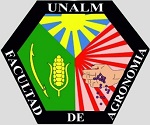Cost-effectiveness of agriculture risk management strategies for resilience to climate shocks in Niger State, Nigeria
DOI:
https://doi.org/10.21704/pja.v6i3.1966Keywords:
benefit-cost, risk management, resilience, food security, irrigation farmingAbstract
The ability of a system, community or society exposed to hazards to resist, absorb, to accommodate and recover from the effects of a hazard in a timely and efficient manner is termed resilience. In this study we used a recent cross-sectional survey data of 293 farming households in Niger State, Nigeria to examine the cost effectiveness of risk management strategies for resilience to climate shocks. Benefit-cost analysis of mitigation strategies was examined where benefit-cost ratio (BCR), and net present value (NPV) were used as decision rules. The mitigation strategies mostly used were drought tolerant crops (62.8 %), crop diversification (60.8 %), buffer stock (54.6 %) and dry season farming (41.3 %). The result showed that about 52 % of the sampled households were food secure while 48 % of them were food insecure. The result showed that dry season rice farming had the highest net benefit (NB) and NPV ($ 199.98) while rain fed maize ($ 35.01) and rice had the least NPV; the result showed the NPV for drought tolerant crops- cassava ($ 170.25), millets ($ 101.58) and sorghum ($ 96.43). The study recommends that households should take up dry season rice farming and grow drought tolerant crops such as cassava, millets and sorghum. Governments should invest in and research and breeding of drought tolerant crops in order to improve food security and household resilience.
Downloads
References
Abubakar, I. U., & Yamusa, M. A. (2013). Recurrence of drought in Nigeria: causes, effects and mitigation. International Journal of Agriculture and Food Science Technology, 4(3), 169–180. https://www.ripublication.com/ijafst_spl/ijafstv4n3spl_02.pdf
Adzawla, W., Azumah, S. B., Anani, P. Y., & Donkoh, S. A. (2020). Analysis of farm households’ perceived climate change impacts, vulnerability and resilience in Ghana. Scientific African, 8(e00397), 2468–2276, https://doi.org/10.1016/j.sciaf.2020.e00397
Akanbi, S. O., Adekunle, A. O., Mukaila, R., & Isola, A. J. (2022). Assessment of crop farmers’ attitude to risk and management methods in oyo state, Nigeria. Western Balkan Journal of Agricultural Economics and Rural Development, 4(1),37–48. https://doi.org/10.5937/WBJAE2201037O
Alves, F. M. M. (2015). Cost-Benefit Analysis in Climate Change Adaptation: The Use of Participatory Methodologies. [Masther’s Thesis, University Institute of Lisbon]. ISCTE repository. http://hdl.handle.net/10071/11386
Atu, J. E., & Okon, E. M. (2018). Flood effects on agricultural productivity: Implications for mangrove forest ecosystem in Akpabuyo, Cross River State, Nigeria. Global Journal of Human Social Science, 18(B3), 1–3. https://socialscienceresearch.org/index.php/GJHSS/article/view/2637/2526
Baiyeri, K. P., & Aba, S. C. (2017). Effective crop evaluation and sustainable crop management for mitigating climate change risks. In Obiri J. A. F., Driver, M. F., Onyekwelu J. C., Akpoko J. G., Ramasawmy B. & Dramé-Yaye, A. (Eds.), Agricultural risk management in Africa: A contextualized manual for tertiary institutions and development practitioners (pp. 207-221). The African Network for Agriculture, Agroforesty and Natural Resources Education. file:///C:/Users/USUARIO/Downloads/FinalFinalAgriculturalRiskManagement.pdf
Buckley, J., & Peterson, H.C. (2015). Preliminary cost-benefit analysis for urban agriculture: an introduction. Community and regional food systems project. https://fyi.extension.wisc.edu/foodsystemstoolkit/files/2015/09/Buckley-Peterson-cost-ben-150904-more-index.pdf
City Population (2020). NIGER State in Nigeria. https://citypopulation.de/en/nigeria/admin/NGA027__niger/
Henri-Ukoha, A. (2020). Assessment of the cost-benefits of climate change adaptation strategies of cassava-based farmers in Southern Nigeria. International Journal of Environment and Climate Change, 10(10),99–110. https://journalijecc.com/index.php/IJECC/article/view/348/697
Ikusemoran, M., Kolawole, M. S., & Adegoke, K. M. (2014). Terrain analysis for flood disaster vulnerability assessment: a case study of Niger State, Nigeria. American Journal of Geographic Information System, 3(3): 122–134. http://article.sapub.org/10.5923.j.ajgis.20140303.02.html
International Maize and Wheat Improvement Center (2013). The drought tolerant maize for Africa project: Six years of addressing African smallholder farmers’ needs DTMA Brief. http://dtma.cimmyt.org.
Lunduka, R. W., Mateva, K. I., Magorokosho, C., & Manjeru, P. (2019). Impact of adoption of drought-tolerant maize varieties on total maize production in south Eastern Zimbabwe. Climate and Development, 11(1), 35–46. https://doi.org/10.1080/17565529.2017.1372269
Magorokosho, C., Vivek, B., & MacRobert, J. (2009). Characterization of maize germplasm in Eastern and Southern Africa: results of the 2008 regional trials coordinated by CIMMYT. https://repository.cimmyt.org/handle/10883/3770
Niger State Bureau of Statistics (2012). Facts and Figures about Niger State. https://www.nigerianstat.gov.ng/pdfuploads/Niger%20State%20Facts%20&%20Figures%202012.pdf
Obiri, J. A. F., Driver, B. M. F., & Yaye, A. D. (2017). General Introduction. in: J. A. F. Obiri, M. F. Driver, J. C. Onyekwelu, J. G. Akpoko, B. Ramasawmy & A. Dramé-Yaye (Eds.), Agricultural Risk Management in Africa- A Contextualized Manual for Tertiary Institutions and Development Practitioners (pp. 1–8). The African Network for Agriculture, Agroforesty and Natural Resources Education. file:///C:/Users/USUARIO/Downloads/FinalFinalAgriculturalRiskManagement.pdf
Okogbenin, E., Setter, T. L., Ferguson, M., Mutegi, R., Ceballos, H., Olasanmi, B., & Fregene, M. (2013). Phenotypic approaches to drought in cassava: review. Frontiers in Physiology, 4(93),1–15. https://doi.org/10.3389/fphys.2013.00093
Onyeneke, R. U., Nwajiuba, C. A., Emenekwe, C. C., Nwajiuba, A., Onyeneke, C. J., Ohalete, P., & Uwazie, U. I. (2019). climate change adaptation in Nigerian agricultural sector: a systematic review and resilience check of adaptation measures. AIMS Agriculture and Food, 4(4), 967–1006. https://doi.org/10.3934/agrfood.2019.4.967
Sova C. A., Chaudhury A. S., Helfgott A., & Corner-Dolloff, C. (2012). Community-based adaptation costing: an integrated framework for the participatory costing of community-based adaptations to climate change in agriculture. https://cgspace.cgiar.org/bitstream/handle/10568/21076/ccafs_wp_16.pdf?sequence=1&isAllowed=y
Stern, N. H. (2006). Stern Review: The economics of climate change. HM TreasuryLondon. https://www.osti.gov/etdeweb/biblio/20838308
Umoh, G. S. (2008). Programming risks in wetland farming: Evidence from Nigerian flood plains. Journal of Human Ecology, 24(2), 85–92. https://doi.org/10.1080/09709274.2008.11906104
Downloads
Published
Issue
Section
License
Copyright (c) 2022 Adedayo Olufemi Adekunle, Raphael Olanrewaju Babatunde, Segun Bamidele Fakayode, Morolake Bolaji

This work is licensed under a Creative Commons Attribution 4.0 International License.










